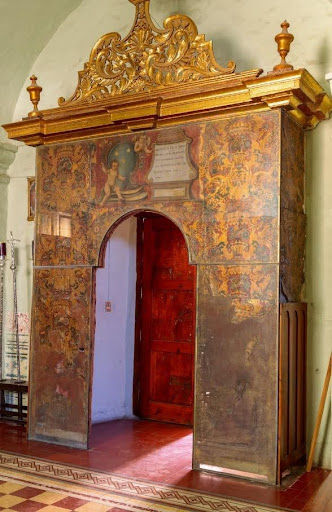THE HISTORY OF ART IN SAN MIGUEL DE ALLENDE
- Natalie Taylor
- Sep 1
- 4 min read
THE ORATORY: PART 2
As would be expected, most of the works found inside the Oratory church relate to the founder of the order: Philip Neri. An Italian priest born in Florence in 1515, he founded the Order of the Oratory, a secular clergy whose members are not required to make vows and live in community, after discarding any personal property. He is known as the “apostle of joy” because he did not insist on solemnity in religious services and was quick to joke, to laugh, and even to dance.

Let us recall that the 16th century was a time of gravity, sternness, and great cruelty perpetrated by the Church of Rome. In 1478, the Holy Office of the Inquisition was established by King Philip of Spain, and led to terrible injustices against Jews, other non-Christians, and those accused of heresy. Then in 1542, the Roman Inquisition was established, and it focused in particular on the suppression of Protestantism. Both of these institutions were responsible for some of the most gruesome acts against humanity perpetrated by the Catholic Church. It is no wonder that people would have responded positively to a new order that relied on conversion through goodwill instead of punishment, an order that encouraged laughter, music, and dance.
The statue of Philip Neri appears at the altar of the church of the Oratory. Although it does not have a definitive date, it most likely was done in the 18th century, if not prior to it. The velvet chasuble, stole, and maniple are done with high-quality gold thread embroidery.
Philip Neri died in 1595, and soon after, there came reports of miracles attributed to him. He was eventually canonized. In the Oratory church, there is an entire room next to the sacristy where all the walls are filled with paintings of Philip Neri either experiencing a miraculous vision or performing a miracle. The paintings were done sometime in the 18th century by anonymous artists. They are modest works, not of the greatest quality, but the scenes are well depicted.
One of these paintings, shown below, is a representation of an event in Philip Neri’s life where he supposedly was delivering alms or provisions to the poor and fell into a hole. The inscription on the painting states: “An angel takes him out of a hole into which he fell when he was bringing some bread.” visibly old and in need of restoration, as are most of the others.

This particular room is kept under lock and key and is used for special presentations for the members of the Oratory. There is a stage in the back which is used during these events.
There are two other examples of the paintings that appear throughout this room. The first one, on the left below, has the following caption: “Teaching two of his spiritual sons how to distinguish between a true and a false vision.” The other, on the right, states: “St. John the Baptist appears, and gives alms to an angel dressed as a pilgrim.”


All these illustrations are done by anonymous artists, but there are a few by well-known novo-Hispanic artist whose works appear in other churches in San Miguel de Allende.

The first is by Juan Rodriguez Juarez, and it’s called Ascencion—the Ascension of Virgin Mary. This is a very common theme in the churches and variations of this scene, by numerous artists can be found in the Parroquia, San Rafael, Las Monjas, and other churches.
Juan Rodriguez Juarez, was one of the most distinguished painters of the vice-regal period and he lived from 1675 to 1728. This painting, found in the sacristy, is a typical depiction of Virgin Mary, in a blue gown, as she ascends to heaven surrounded by cherubs. The canvas and the paint colors are in good condition and has the signature of the artist in the left lower corner.
In the right lower corner there is a picture of a man and his name. It is Severino de Jauregui, an official who secured the transfer of the Mulatto Brotherhood’s Chapel of Our Lady of Solitude (and Ecce Home) to become property of the Oratorio in the 18th century. He is honored by the Oratorians by appearing in this painting.

Another work of are worthy of mention is a painting of the Virgin of Guadalupe. Its significance is that it was done by another famous novo-Hispanic painter, Miguel Cabrera (1710-1768), known specifically for creating images of the Virgin of Guadalupe, of which this is an example.
Two other objects are of interest in the sacristy, both shown below. The first is an elaborate doorway, and the second is a fountain made of cantera which is at least 400 years old. Since the church was not built until 1710, the fountain would have been outside originally. A statue of St Philip Neri stands at the top, a later addition.


There are many other paintings and sculptures in the church, but the majority were done by anonymous painters. There is something quite appealing as you walk through the side door into the ancient courtyard, which used to be the entryway to the Mulatto chapel built in the late 1600s. The bell ringer is there regularly pulling the rope to announce mass. If you happen to be present, the vibrations will go through you as the sound of the bells resonates in the enclosed space.





Comments